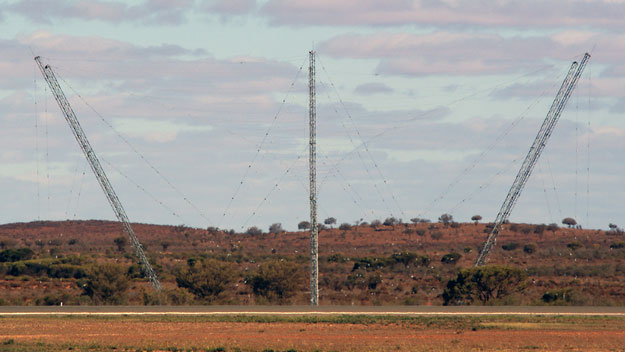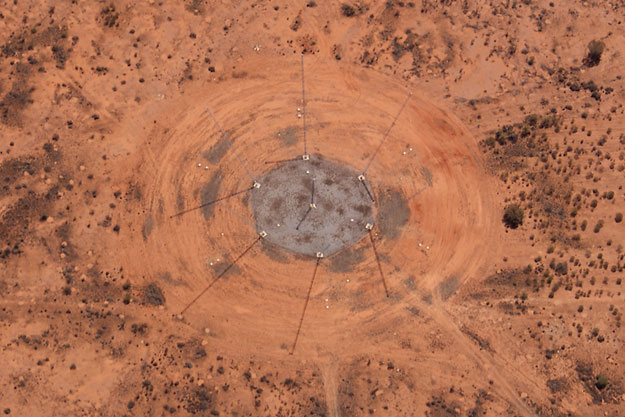
These photos show the Airservices Australia
High Frequency (HF) radio antenna at Broken Hill, NSW, in October 2009.
The following information was provided by Ray Farmer:
"The antenna is an Andrews Model 3005 Spira-Cone that has a number of really nice features important to our operators. They were installed in 2005 as part of the HF RAMP (Rationalisation & Modernisation) project that saw our 40 year old equipment completely replaced at a cost to Airservices of $19M. The system was specified to provide amazing coverage to all areas of the Australian FIR.
"The antenna has a property called elliptical polarization that reduces signal fading. As an aircraft banks, turns and generally manoeuvres the 'plane/configuration' in which the signal is radiated changes, and if the antenna being used to receive that signal only operates in one 'plane' then severe fading and degradation of the signal occurs. This antenna reduces the effects of changing polarisation by being elliptically polarised. Changes in atmospheric conditions during the day can also generate the same type of fading and these antennas help to compensate for this effect.
"The antenna operates with two 'modes'. The high mode receives or transmits signals that are relatively close to the antenna site while the low mode receives and radiates over longer distances. Most antennas only have one basic mode so are limited to the range associated with that mode. The antenna is also omni-directional so is capable of receiving and transmitting through 360 degrees, unlike the older dipole antennas that were highly directional. This means that there are a lot less black spots where no signals reach."

The HF RAMP
project replaced 17 HF outlets with 5 sites serving three Regional Domestic
Air Route Areas (RDARAs) using a mix of 1 kW and 500 W transmitters.
(Photos: Phil Vabre)
Back to main Communications & Navigation index